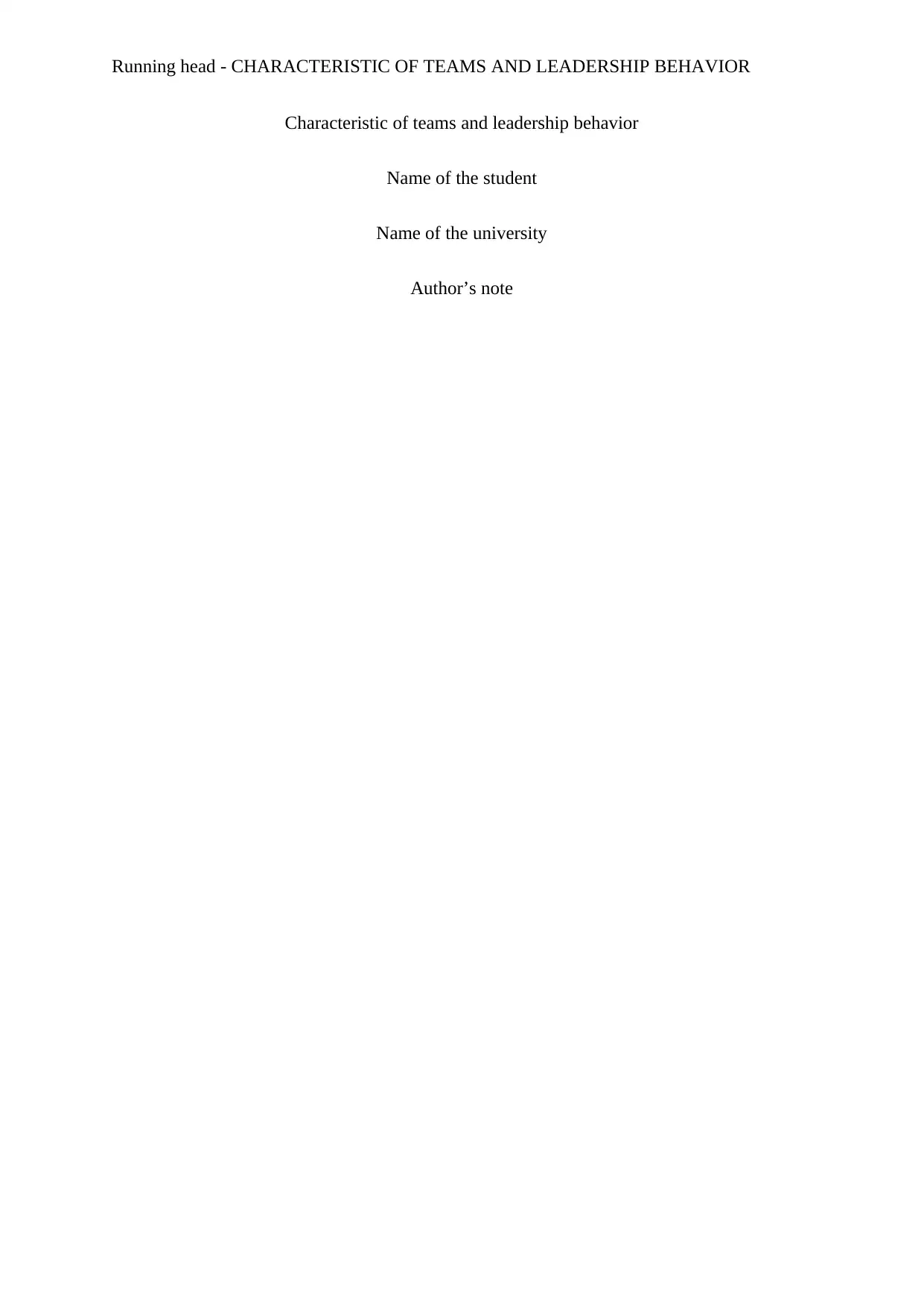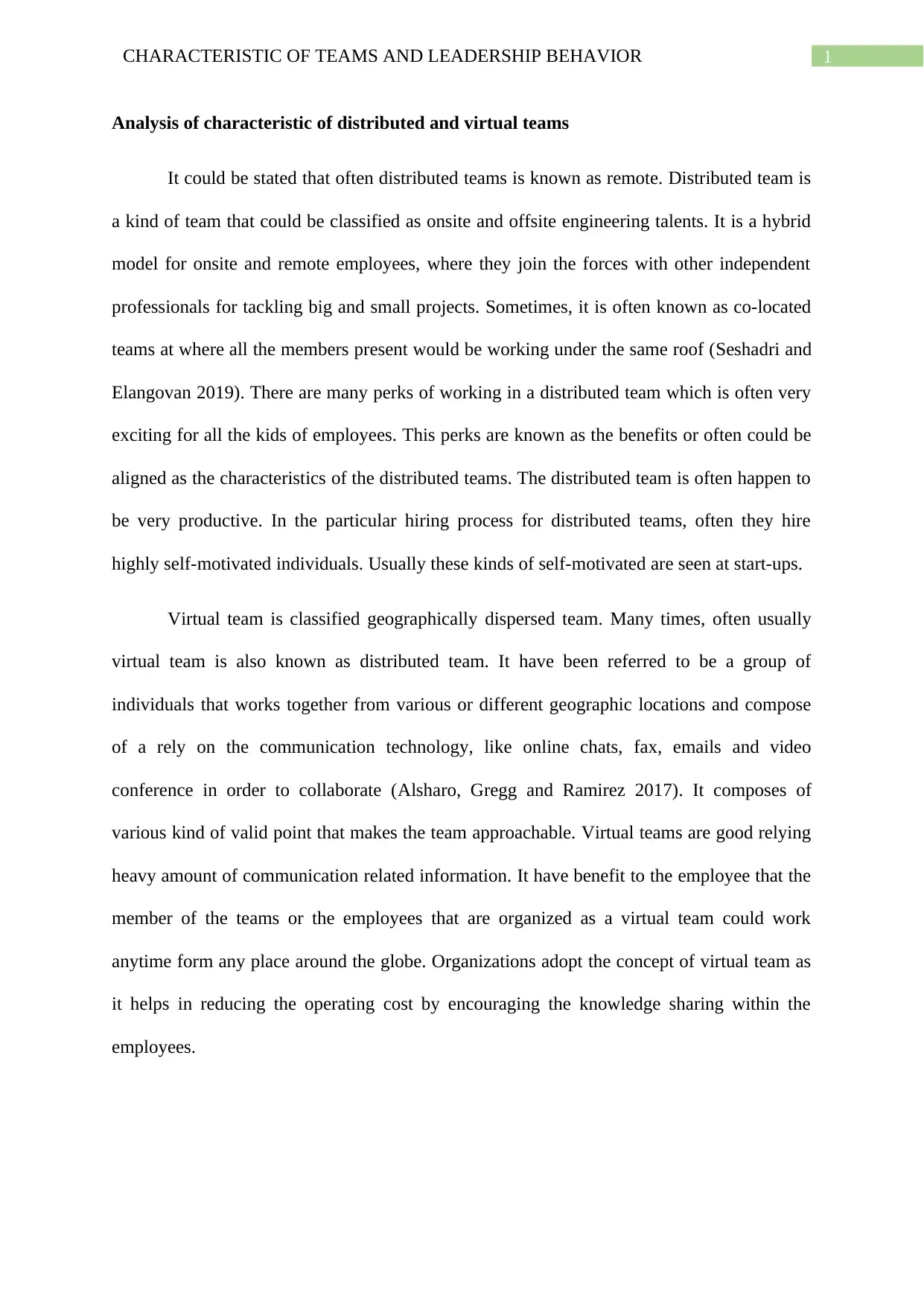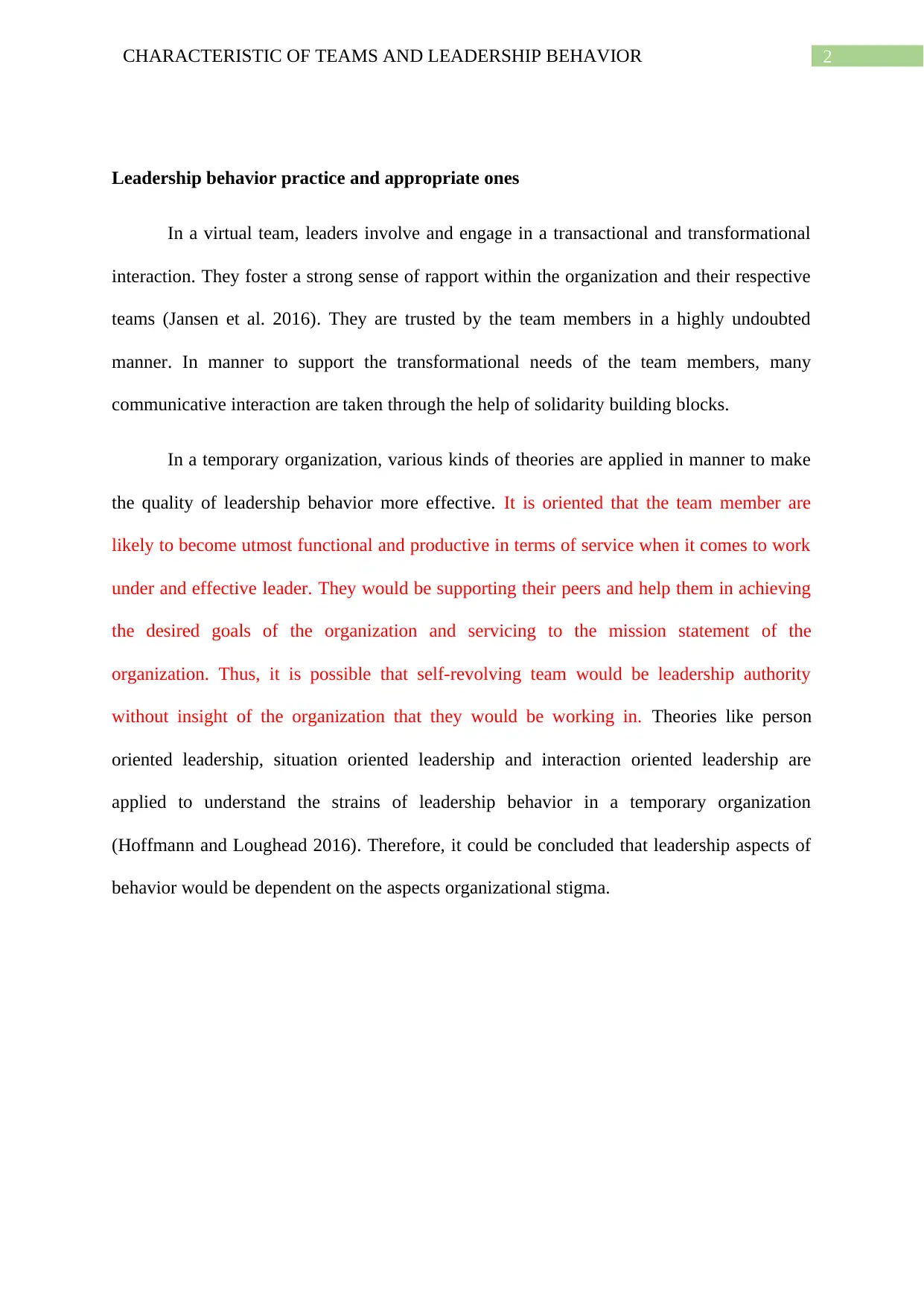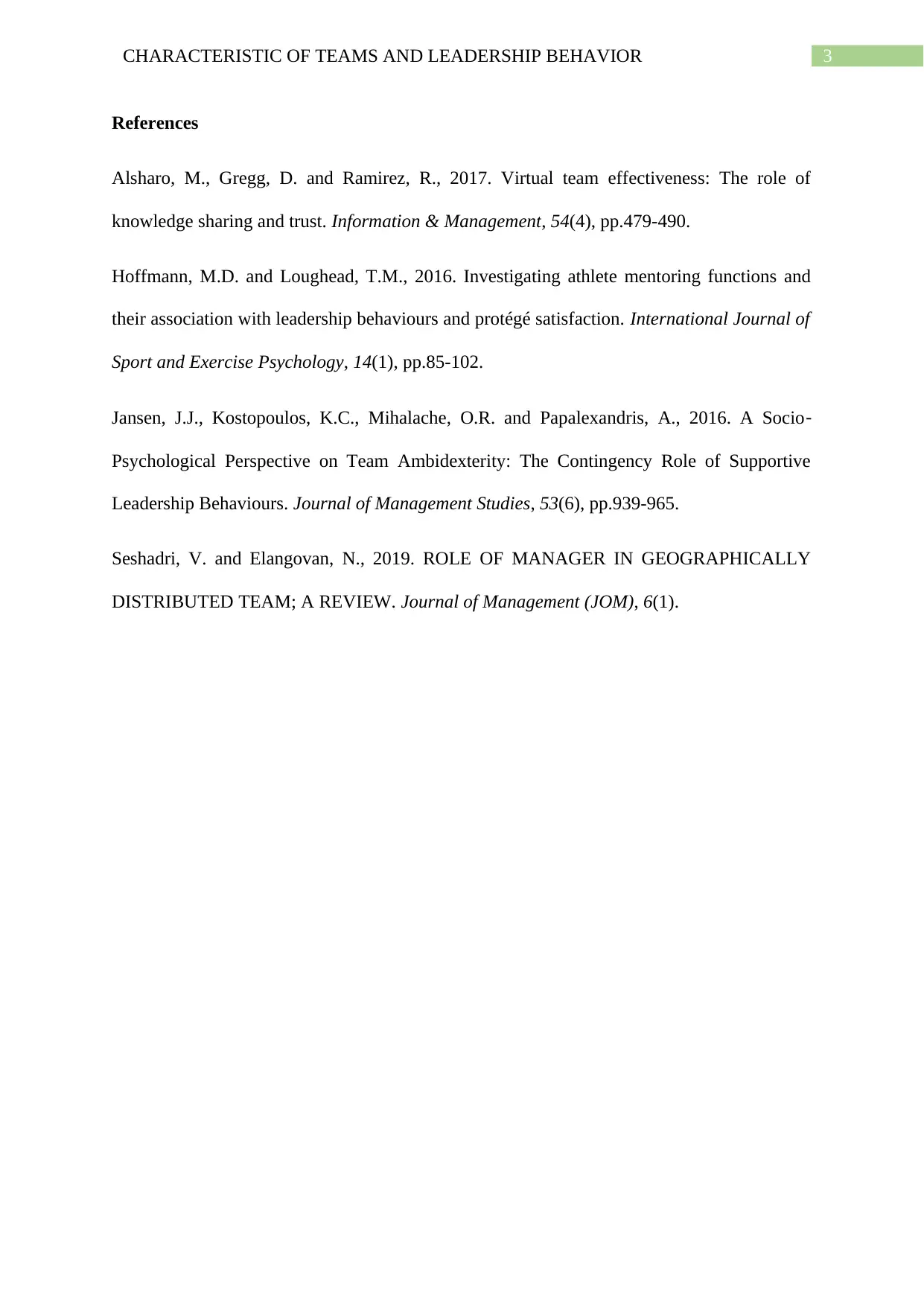Characteristic of Teams and Leadership Behavior: A Detailed Analysis
VerifiedAdded on 2022/11/28
|4
|766
|172
Report
AI Summary
This report provides an analysis of the characteristics of teams and leadership behavior, with a specific focus on distributed and virtual teams. It defines and differentiates between distributed and virtual teams, highlighting the benefits and challenges associated with each, such as increased productivity and the reliance on communication technology. The report also examines leadership behaviors within these teams, including transactional and transformational approaches, and how leaders foster rapport and trust. It references various leadership theories, such as person-oriented, situation-oriented, and interaction-oriented leadership, to explain effective leadership in temporary organizations. The report emphasizes the importance of communication, project management style, and managerial competencies for successful project execution in dispersed settings.
1 out of 4











![[object Object]](/_next/static/media/star-bottom.7253800d.svg)